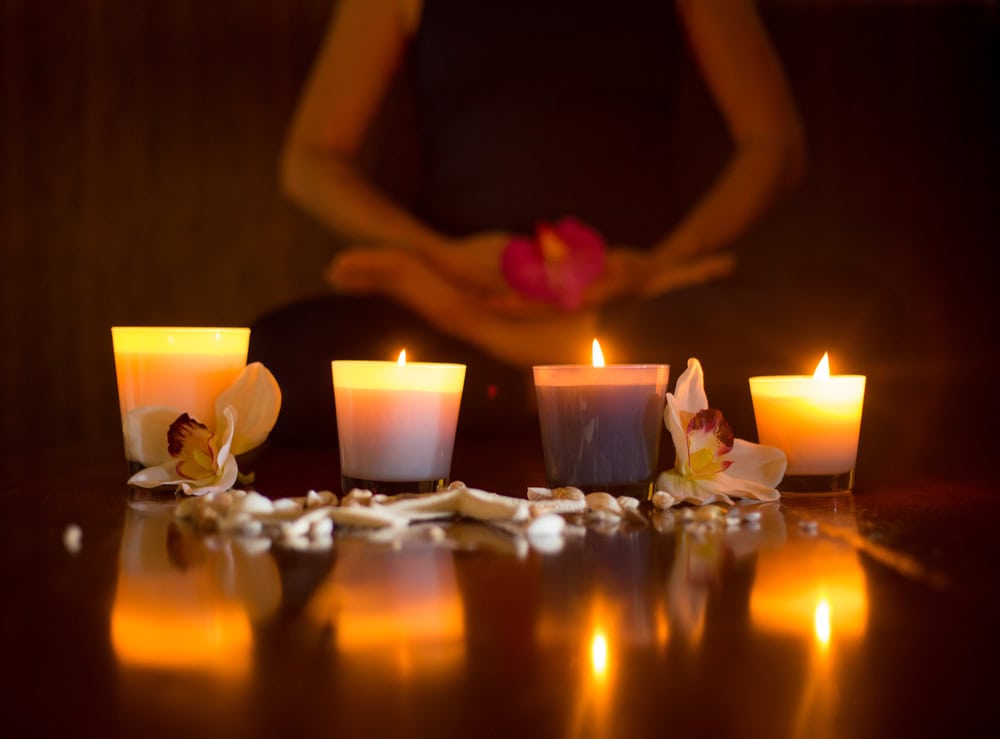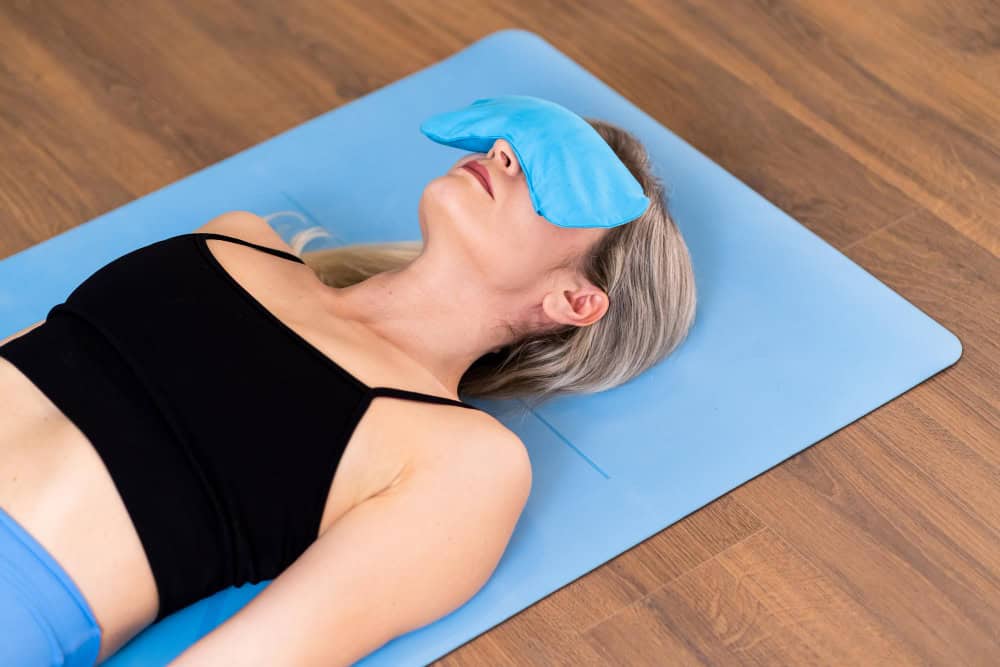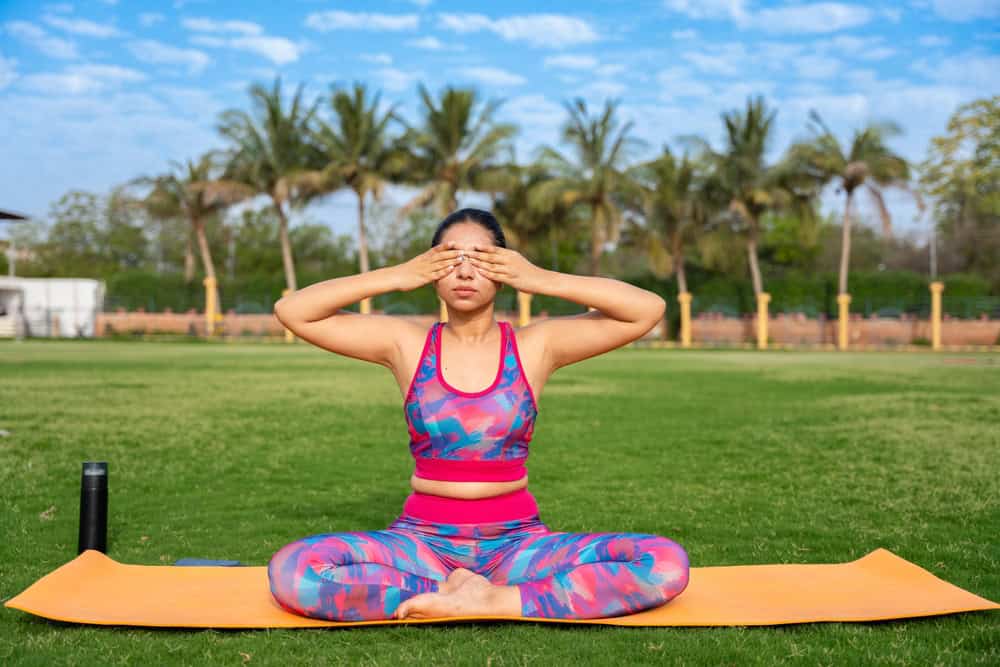
Yes, Your Eyes Need Yoga Too
There are so many ways we connect to the world today – a lot of us are glued to our smartphones, devices, and television screens. Whether you’re working from home, scrolling through social media, or binge-watching your favorite show, there is a good chance you are spending a lot of time in front of a screen. As a result, tired eyes, blurred vision, and headaches could be signals of something called Digital Eye Strain, also known as Computer Vision Syndrome. Symptoms of digital eye strain can include dry eyes, irritation, fatigue, and blurriness.
Eye drops and blue light glasses can give you temporary relief, but practising yoga for your tired eyes is a natural, holistic, and long-term solution. Yoga is all about increasing blood circulation, toning and strengthening the eye muscles, and calming your nervous system. Practicing yoga for tired eyes, even just a few minutes, will help repair fatigued eyes, regain clarity of vision, and support healthy, happy eyes.
7 Yoga Poses to Calm Tired Eyes
1. Eye Rotation – Gentle Movement for Flexibility
 Benefits: Strengthens eye muscles, increases mobility, decreases stiffness.
Benefits: Strengthens eye muscles, increases mobility, decreases stiffness.
How to do it:
- Find a comfortable seating position with your back straight.
- Keeping your head still, slowly rotate your eyes in a clockwise motion in a complete circle.
- Do this 5 times clockwise and then 5 times anti-clockwise.
- After each round, blink rapidly.
Tip: Do this daily to maintain sharp vision and help ease fatigued eyes.
2. Trataka (Steady Gazing)
 Benefits: Suitable for improving focus and concentration, enhancing eye muscle strength, and promoting clarity of mind.
Benefits: Suitable for improving focus and concentration, enhancing eye muscle strength, and promoting clarity of mind.
How to do it:
- Sit in a dark room in a comfortable position.
- Place a candle or another small object at eye level and about 2-3 feet away.
- Steadily gaze at the flame or object and do not blink, for as long as it is comfortable.
- When you’re ready, close your eyes and think about the after-image in your mind.
- Repeat this process 2-3 times.
This meditative activity is a traditional yogic practice to help build your eyesight, focused thought, and concentration.
3. Palming – Instant Warmth for Tired Eyes
 Benefits: Relaxes eye strain, increases focus, and relaxes optic nerves.
Benefits: Relaxes eye strain, increases focus, and relaxes optic nerves.
How to do it:
- Rub your hands together vigorously until they feel warm.
- Close your eyes, and gently cup your palms over them.
- Don’t apply pressure to your eyeballs.
- Take a deep breath in and hold for 1-2 minutes.
Easy, right? This quick technique feels good immediately and helps your eyes recover after a long time in front of screens.
4. Shavasana (Corpse Pose) with Eye Relaxation
 Benefits: Enables deep relaxation for both mind and body to relieve tension and stress and to allow the eyes to rest profoundly.
Benefits: Enables deep relaxation for both mind and body to relieve tension and stress and to allow the eyes to rest profoundly.
How to do it:
- Lie flat on your back in a comfortable, restful position with your arms relaxed next to your body, palms facing up.
- Gently close your eyes, and notice your natural breath.
- To enhance restfulness, place a warm, soft, cool cloth or eye mask over your eyes.
- Rest in this position for 5-10 minutes.
Shavasana doesn’t have to be done only at the end of a yoga class; it can help reset the nervous system, and then the tension reduction will also be felt in your eyes and brain.
5. Blinking Program
 Benefits: Lubricates the eyes, reduces dryness, and aids blinking development.
Benefits: Lubricates the eyes, reduces dryness, and aids blinking development.
How to do it:
- Sit in a comfortable position with eyes open.
- Blink rapidly 10 times in a row.
- Close your eyes, relax for 20 seconds.
- Repeat that cycle 3-5 times.
Many people forget to blink while looking at the screen, contributing to dry, irritated eyes. This exercise re-teaches the blinking reflex.
6. Bhramari Pranayama (Humming Bee Breath)
 Benefits: Calms the mind, alleviates tension in the eyes, and induces relaxation.
Benefits: Calms the mind, alleviates tension in the eyes, and induces relaxation.
How to do it:
- Sit comfortably in silence.
- Using your thumbs, close your ears. Use your index fingers and place them over your eyebrows, and your remaining fingers over your eyes.
- Take a full belly breath in, then exhale while producing a humming sound, similar to the sound a bee makes.
- See if you can feel the vibrations around your face and eye area.
- Repeat for 5-7 rounds.
This breathwork is a soothing practice and is helpful in reducing sensory overload and eye fatigue. One of the best yoga poses for tired eyes.
7. Focus Change (Near Viewing and Far Viewing)

Benefits: Strengthens the ciliary muscles of the eye; enables flexibility of focus.
How to do it:
- Sit comfortably and hold your thumb about 10 inches from your face.
- Focus on your thumb for 5 seconds.
- Shift your focus to something that is 20 feet away and hold for 5 seconds.
- Continue repeating your near-far shifting 10-15 times.
- This exercise is particularly useful for the reader who is doing hours of reading or working on the computer (i.e., laptop).
Tips for Preventing Eye Damage from Screens
 In addition to the poses of yoga for tired eyes, adopt healthy habits that further protect your eyes:
In addition to the poses of yoga for tired eyes, adopt healthy habits that further protect your eyes:
- Follow the 20-20-20 rule: Every 20 minutes, take at least a 20-second break to look at something that is 20 feet away.
- Be bright: Make sure the brightness of the screen matches the brightness of the room you are in.
- Blue light: Use screen protectors or blue light glasses.
- Drink water: Keep hydrated to reduce eye dryness.
- Eat carrots: Ensure you include carrots, green leafy veggies, and foods with omega-3 in your diet.
If you frequently feel discomfort, dryness, or blurred vision after being on your screen, please consider complementing your yoga practice with an eye care range you trust. Check out TATA 1mg’s Eye Care Products to relieve Digital Fatigue!
When to Call Your Doctor for Eye Strain
Iit’s important to know when your symptoms may require the assistance of a medical professional. You should consult with your eye care provider if you experience any of the following:
- Blurred vision, which worsens after rest
- Frequent headaches or eye pain
- Light sensitivity
- Red, itchy, or watery eyes that do not improve
- Difficulty focusing on near or far objects
These may indicate other underlying issues, including dry eye syndrome, refractive errors, or computer vision syndrome. Getting an accurate diagnosis and the recommended treatments for those conditions will be helpful.
Consult from the comfort of home now!
Final Takeaway: Prioritize Your Eyes & Care for Them

Your eyes work hard day in and day out, especially in this technologically advanced world where the digital landscape is prevalent. Ignoring the health of your eyes could lead to serious long-term effects, including poor eyesight or chronic dryness, which could even lead to migraines. Just by practicing the mentioned yoga poses for tired eyes, you can not only reinvigorate your vision but also provide your general health with a boost.
Make it a part of your daily routine to take a few minutes to practice these exercises! Eventually, you will feel that the strain in the eye and tiredness will reduce, your vision will improve, and your eyes will feel more alive and less fatigued.
FAQs
-Can yoga alleviate tired eyes from screen time?
Yes, yoga can be very helpful for the tired eyes you may develop from screen time. Practicing eye-centered yoga poses and pranayama like Bhramari will help you recover from screen fatigue, help with eye dryness, and improve your vision naturally.
-How long should I do yoga to relieve eye strain?
You only have to practice yoga for relieving eye strain for around 10-15 minutes a day. A consistent daily practice, with the exercises of palming, blinking, and focusing distance, can provide noticeable results in your ability to relieve eye fatigue and improve your focus.
What is the 20-20-20 rule for maintaining healthy eyes while on a device?
The 20-20-20 rule is a visual habit in which you take a break, every 20 minutes of screen time, to focus your eyes on something 20 feet away for at least 20 seconds. We heavily recommend this practice along with the use of yoga for reducing digital eye strain and creating healthy vision.
(The article is written by Deepa Sarkar, Medical Writer, and reviewed by Monalisa Deka, Senior Health Content Editor)
Recommended Reads
How To Stay Safe From Eye Flu During Monsoon?
Eye Flu Spike: Home Care & Essential Tips To Stay Safe